郭建设
1959年9月1日出生
中华文明摄影家联盟秘书长
中国百姓摄影协会会长
1982-1993年 在中国日报摄影部任中央组记者
1984年 赴柬埔寨战区采访;
1987-1988年 赴美国底特律新闻学院讲学
1996-1998年 经济日报报业集团名牌时报摄影部主任
1999-2004年 国安广告总公司摄影总监
2005-2015年 北京恩典视像文化发展有限公司摄影总监
获奖情况:
1982年 获第一届全国新闻摄影大赛银奖、铜奖;并获“全国新闻摄影奖”
1986年 获荷兰世界新闻摄影年赛提名
1988年 获“全国优秀新闻工作者”称号
1990年 提名全国十佳摄影记者
1991年 获全国首届“佳能”杯黑白摄影比赛银奖
1992年 被授予“全国十大青年摄影家”称号
2002年 获中国艺术摄影学会“金路奖”
2006年 获中国首届“亚洲新闻摄影大赛”文化艺术类金奖
2008年 获中国摄影家协会“抗震救灾优秀摄影家”荣誉
2010年 获文明中国杰出摄影家证书
个人影展
2012年 巴西里约热内卢举办《红色中国》个人影展
2004年 法国巴黎奥塞市举办《红色中国》个人影展
美国洛杉矶举办《红色中国》个人影展
2001年 平遥国际摄影节举办个人影展《黑白记忆》
1997年 北京举办《十年再见》个人影展
1988年 在美国旧金山举办《新闻照片》个人影展
1987年 在北京中国美术馆举办第一次个人新闻影展—《起点》
出版作品
2010年 出版个人09影像日记
2004年 出版个人摄影图文书《乌镇》工人出版社
2003年 出版个人专著《红色中国》中国文联出版社
1989年 出版个人画册《他们看到了北京》
Guo Jianshe
Born in 1959
Secretary General of China Civilization Photographer League.
President of China Citizen Photographer Association.
Central Team Journalist of China Daily Photo Department.
News photojounalist at Cambodia War.
Teacher of Detroit News Academy.
Chairman of the Photography Department of Famous Time,Economic Daily Newspaper Group.
Photo Inspector of Guoan Advertisement Company.
Photo Inspector of Beijing Endian Image Culture Development Co. Ltd
Awards
silver and bronze award of 1st National News Photo Competition, and National News Photo Award.
Nominie of Holland Global News Photography Annual Competition.
National Outstanding News Staff.
Nominie of National Ten Press-Photographer.
silver award of 1st National Canon Cup Black and White Photography Competition.
National Ten Youth Phoyographers.
China Art Photography Acad Golden Way Award.
Gold Award of Cultural Art, 1st National Aisan News Photography Competition .
Excellent Photographer of Earthquake Relief Work, China Photographer Association.
Civilized China Outstanding Photographer.
Solo Exhibitions
“Red China”, Rio, Brazil.
“Red China”, Orsay,France.
“Red China”, Los Angeles,USA.
“Black and White Memory”,Pingyao National Photo Festival.
“After Ten Years”,Beijing.
“News Photos”, San Francisco,USA.
“Beginning Point”,first News Photo solo,China Art Museum.
Publications
Solo Photo Dairy.
“Wuzhen”,Workers Press.
“Red China”,China Literary Federation.
“They See Beijing”.
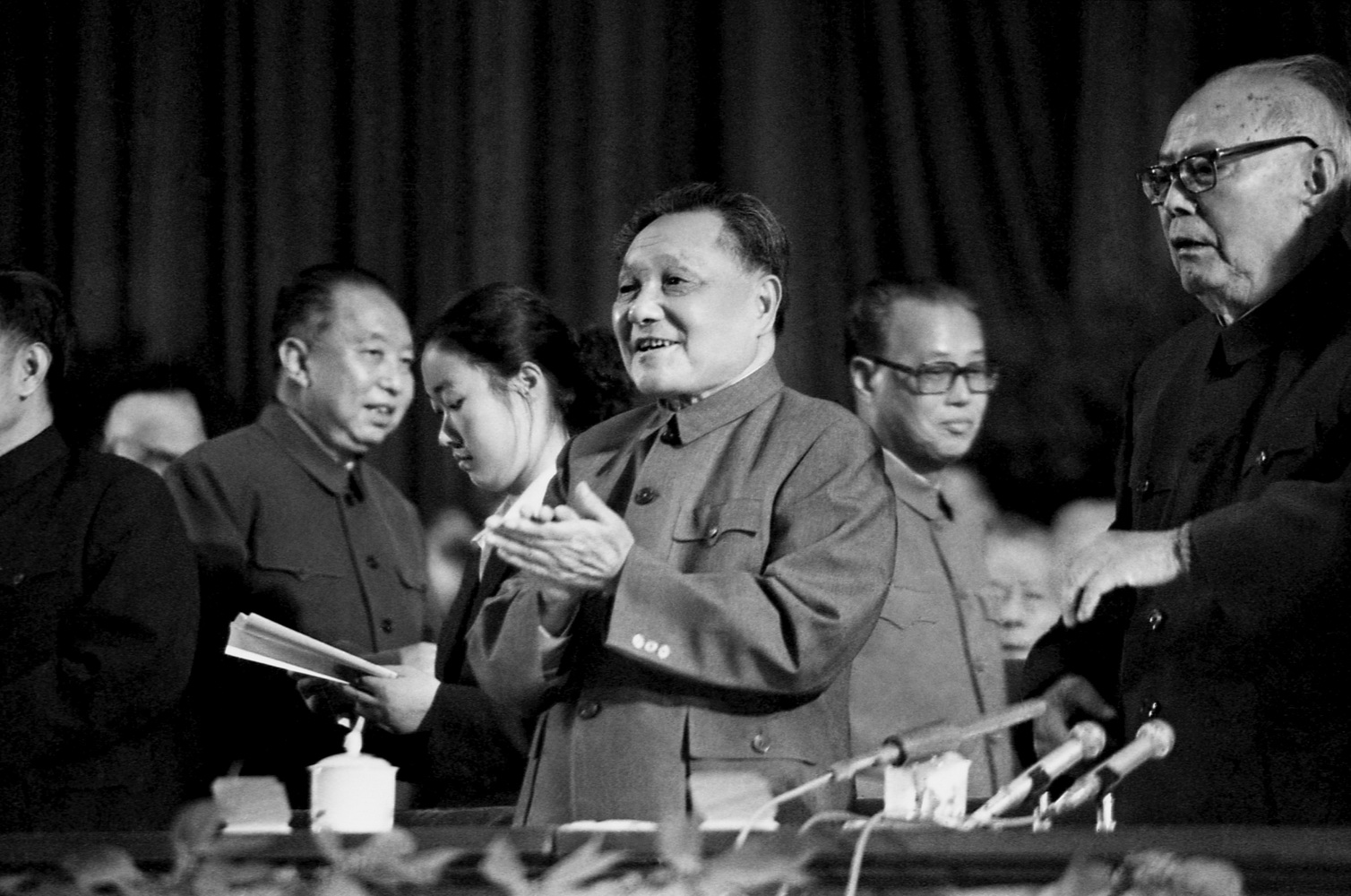
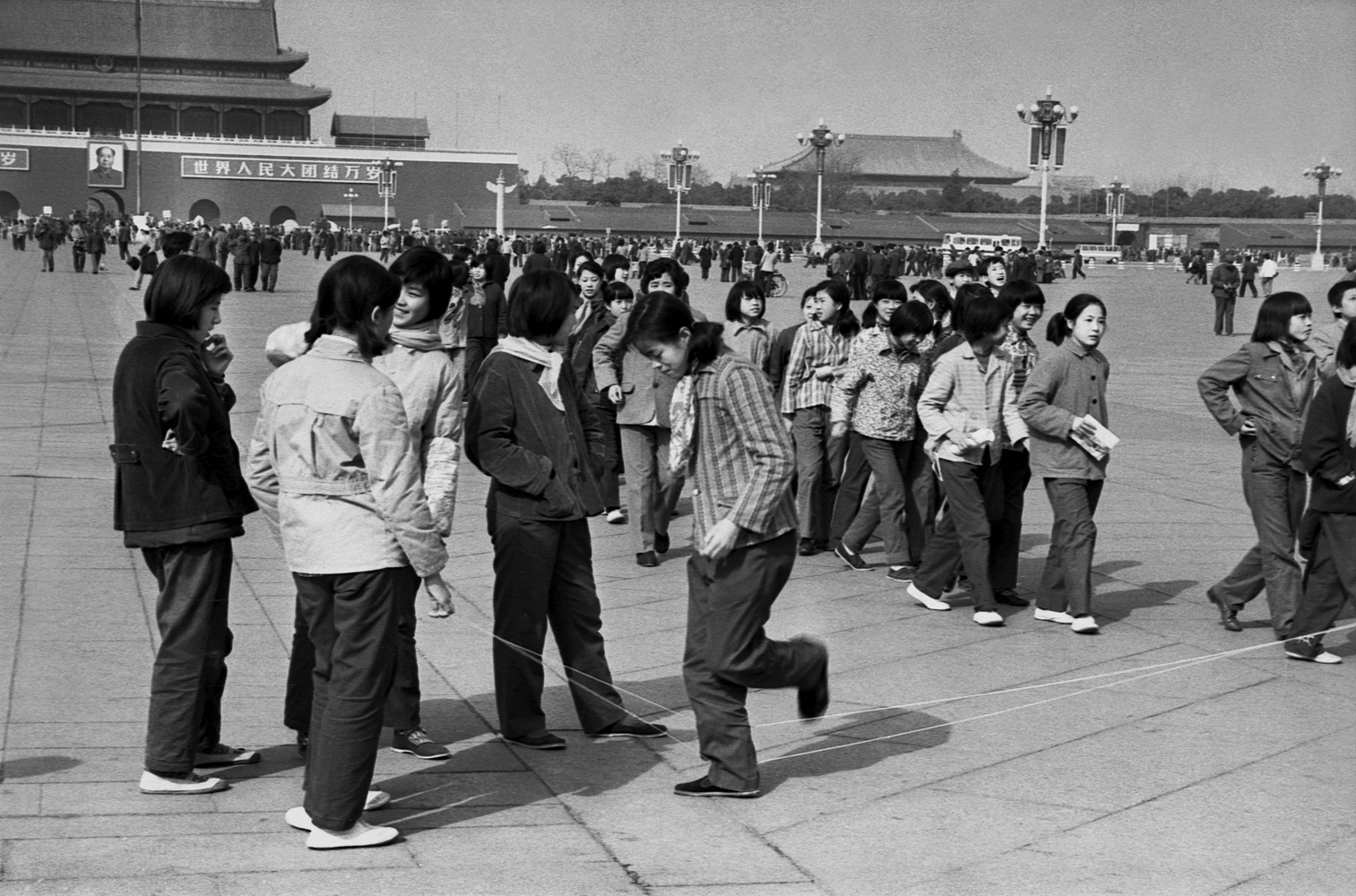
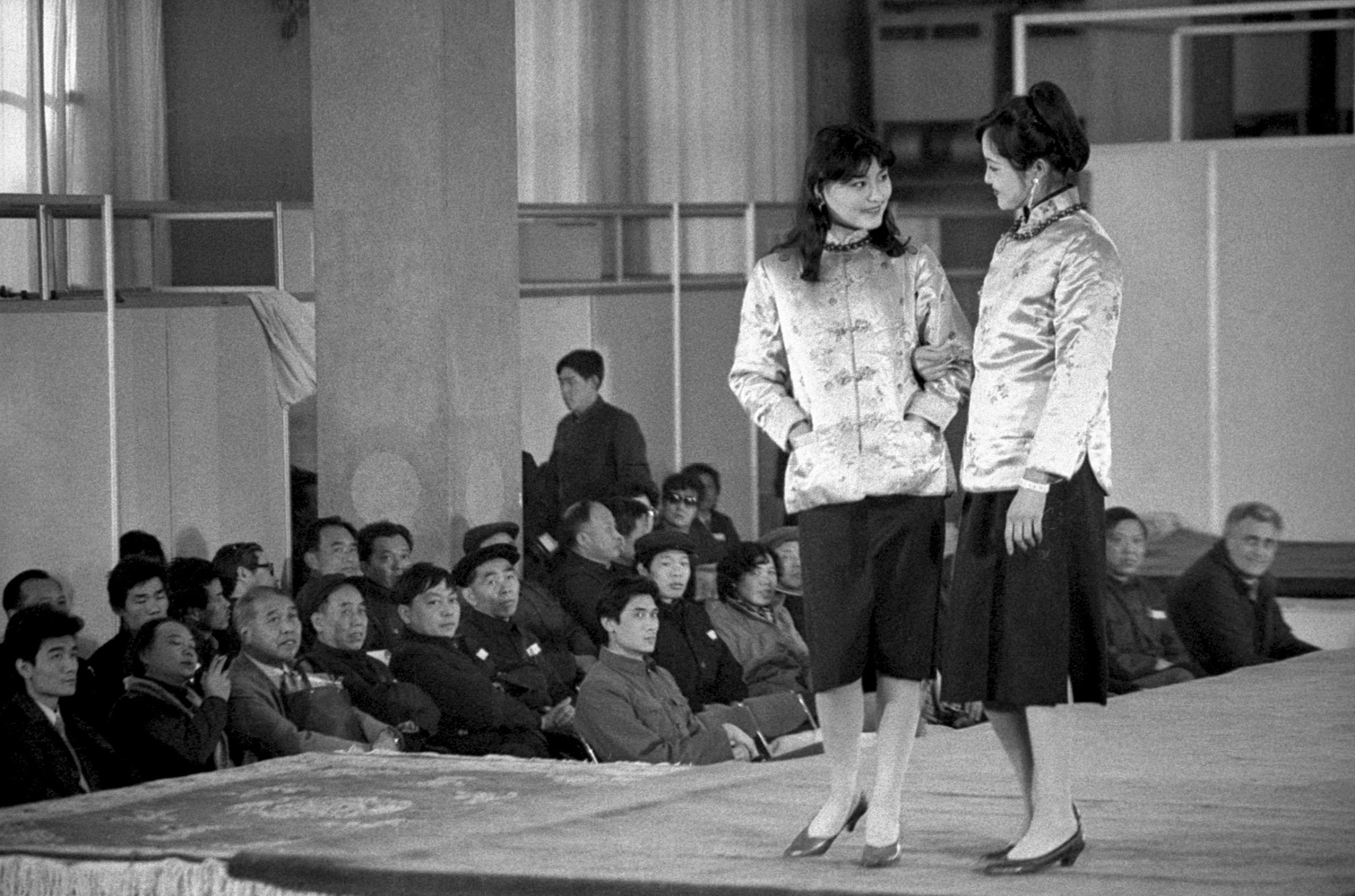
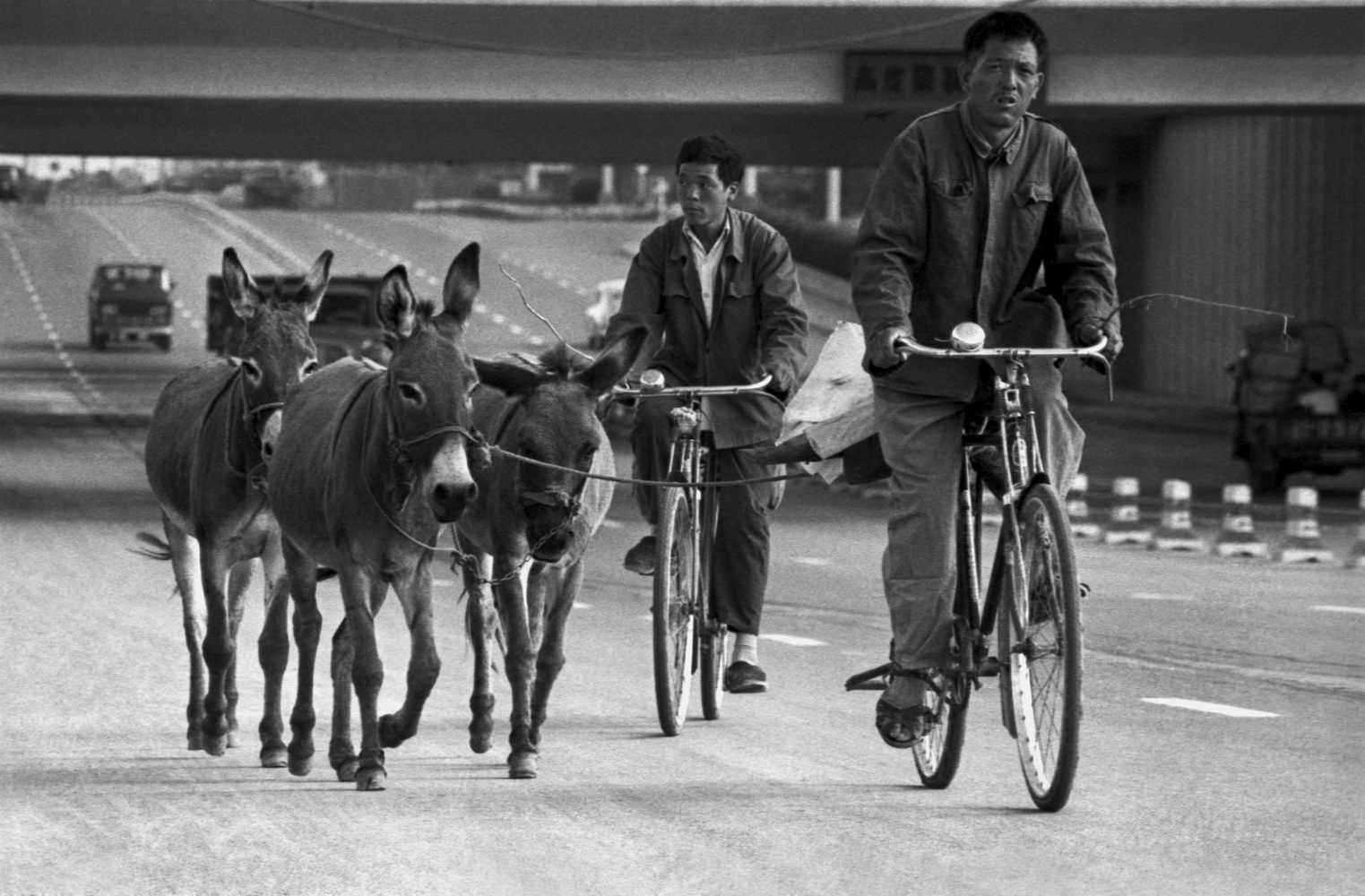
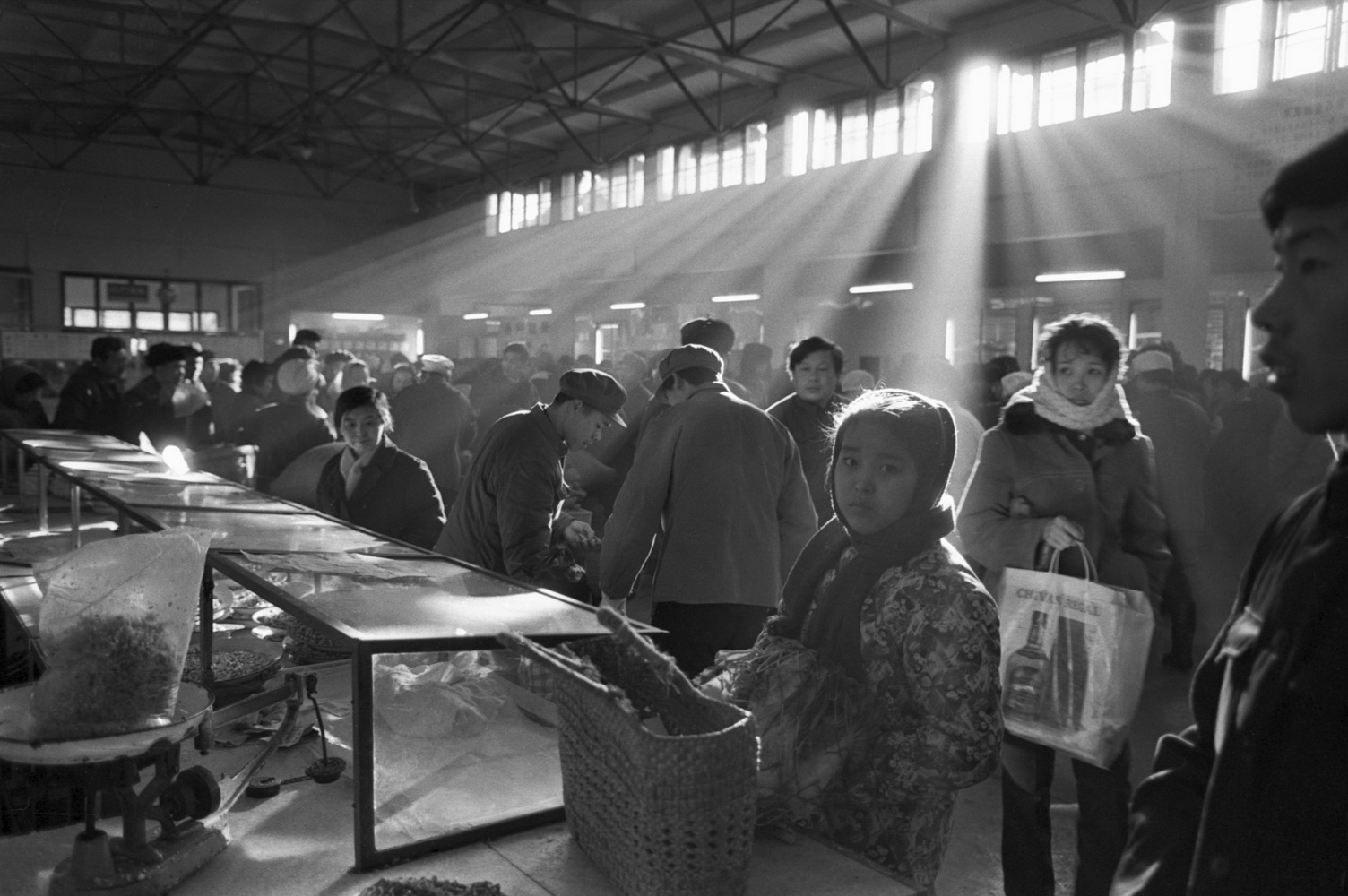
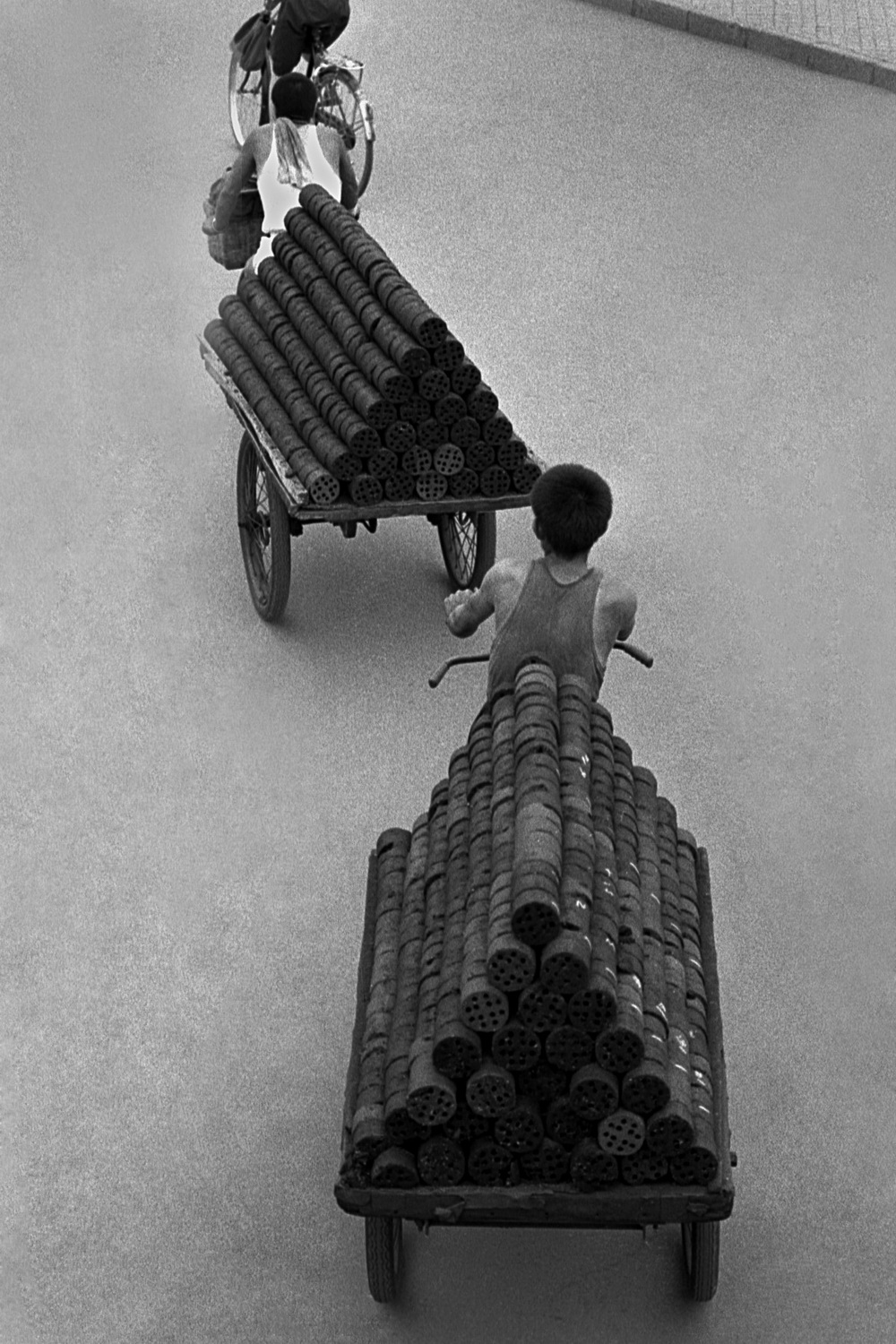
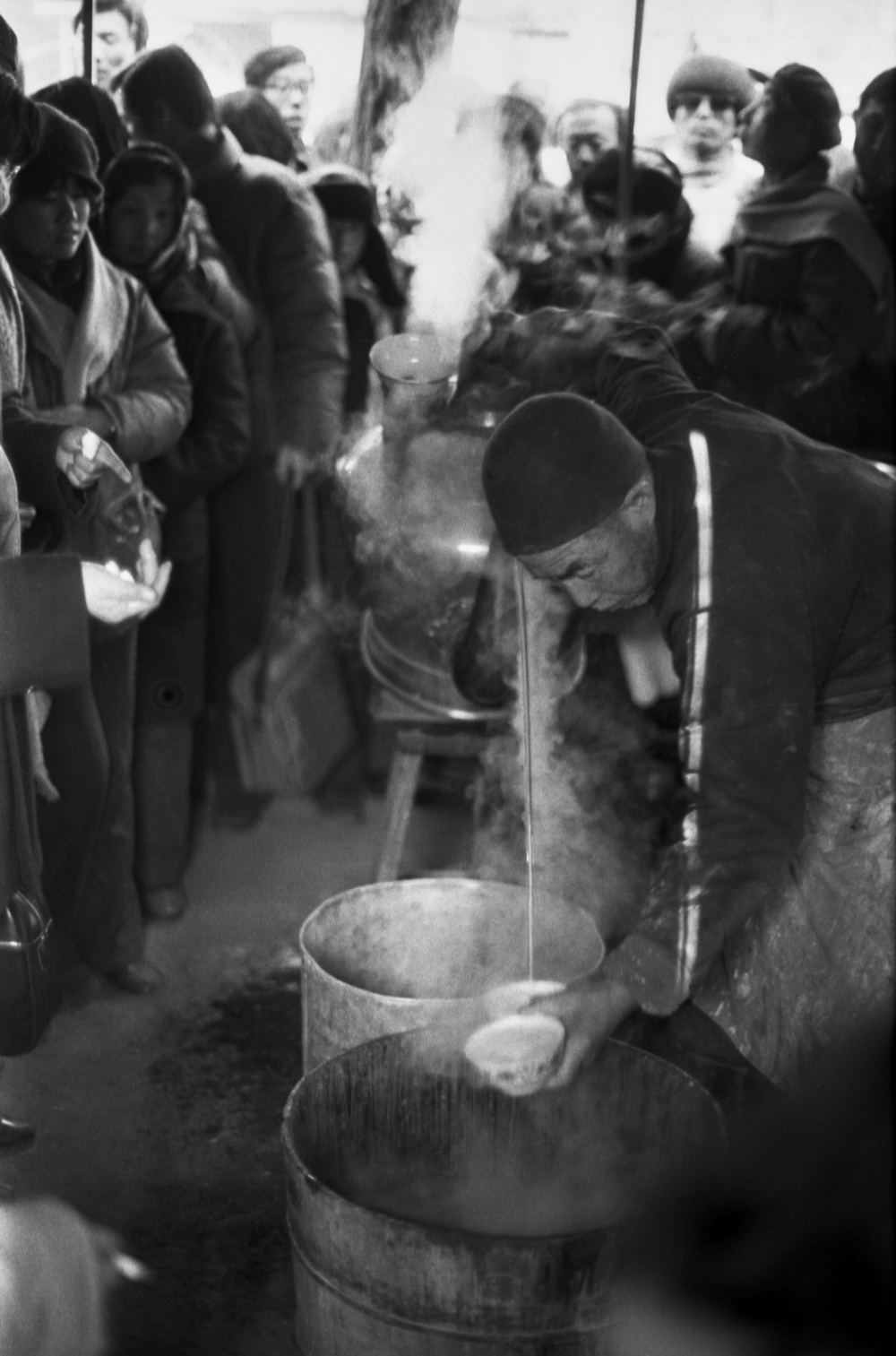
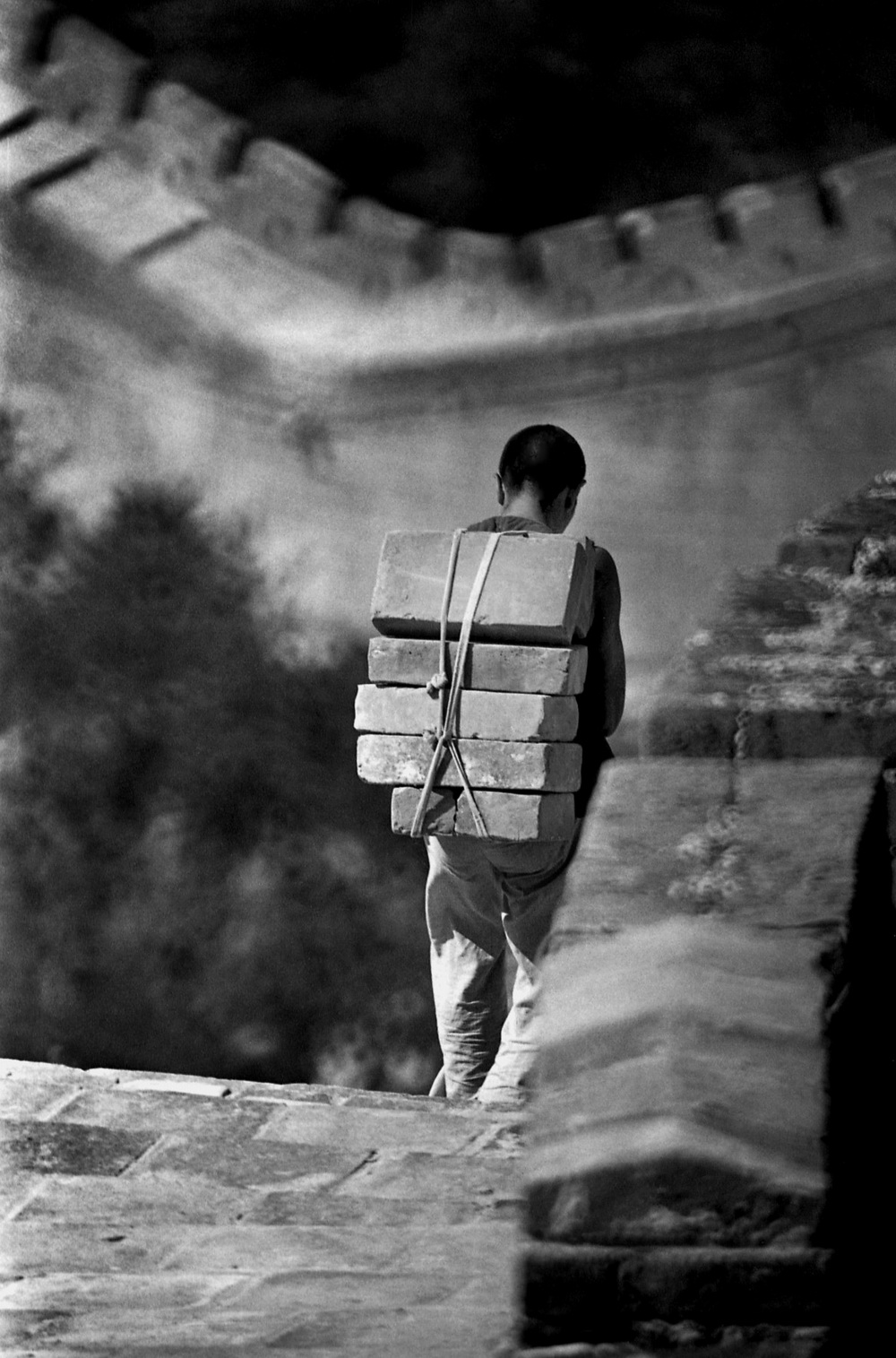
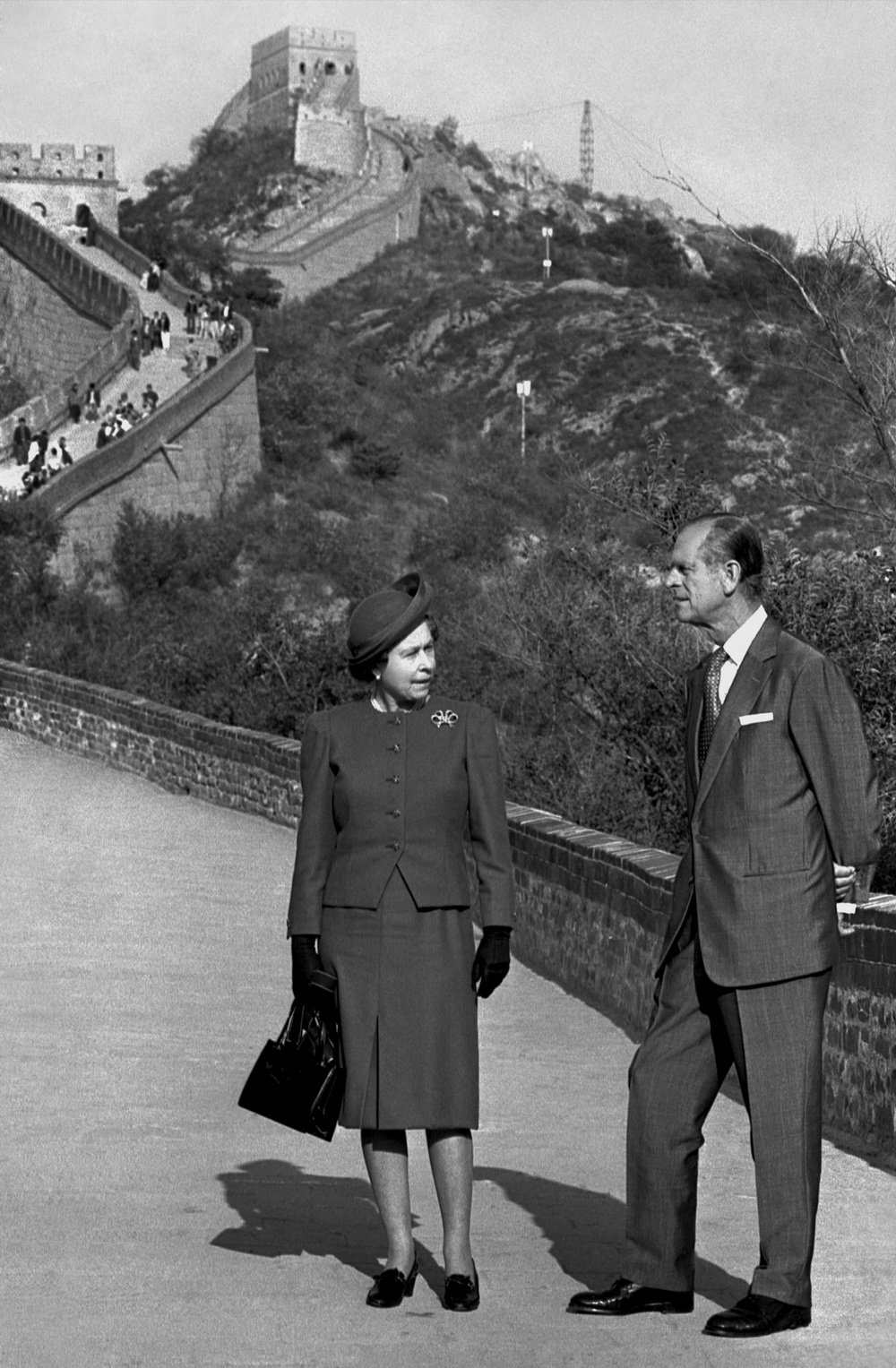
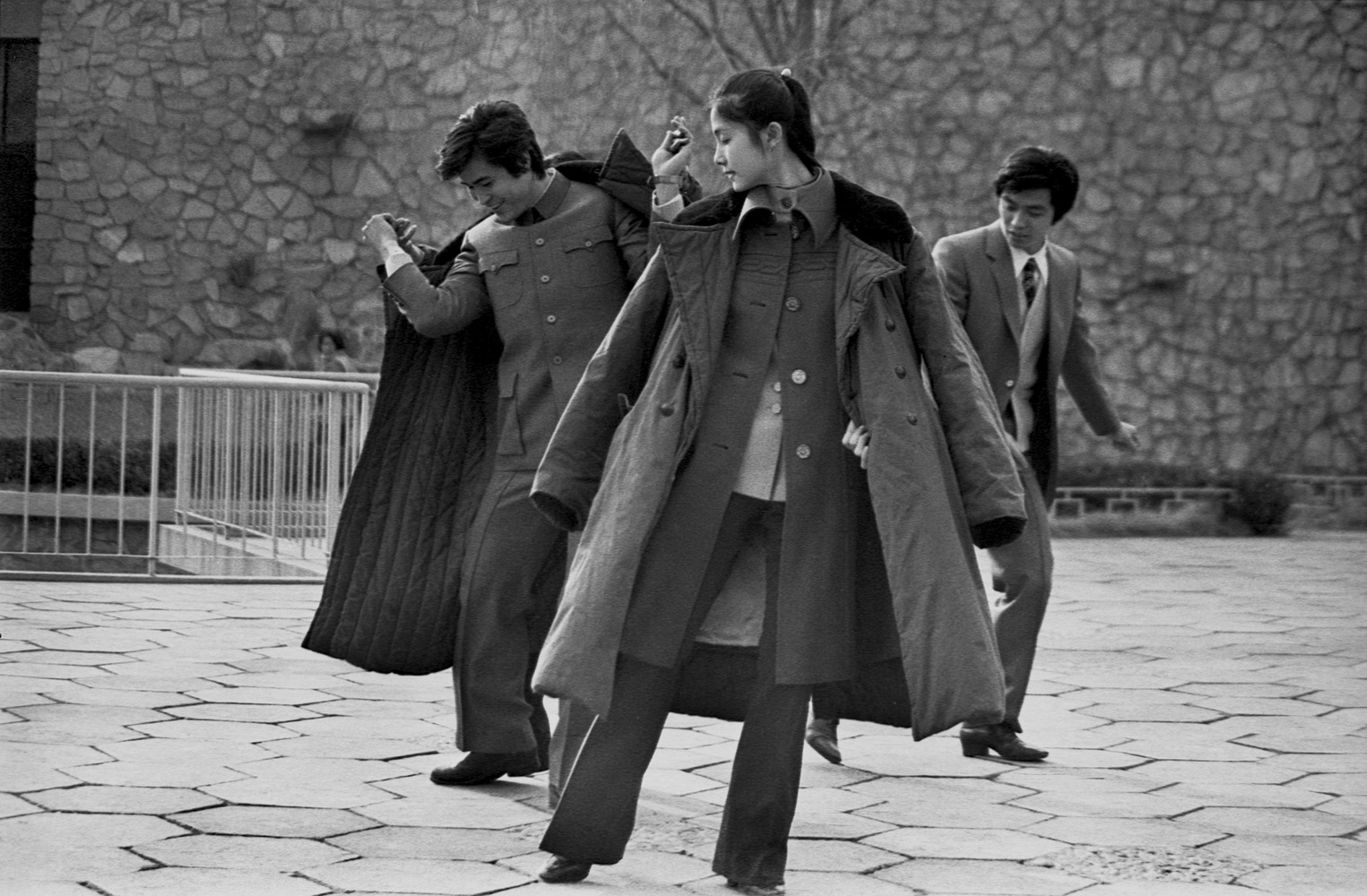
评论节选
一个不停歇的摄影人
A Restless Photographer
He said, it’s not because he’s born in the 50s of red, but only simply be fond of red. He is optimistic, after SARS period, what China embraced is booming like red, red is a kind of implication. He brings thoughts to shoot the “Red China,” further comprehend all the possibilities that red brings to the nation. He is lucky, in his 30 years career as a photographer; he found a theme that could continue for a whole life. He said again, “Whatever subject is, once is vested with red, it means happiness and enthusiasm.”
News Wide-angle Lens
Guo Jianshe was a photojournalist ten years ago, before he quitted the news industry. He still takes photographs as his job, but there’s no deadlines, no restriction; he could explore new forms and take interesting pictures as many as he can, he is free now. Recently, in his series work of ‘Red China,’ some have quite similar interesting points with media and forms and even texture of paintings and contemporary artworks. They are more pure and entertaining.
When looking at these photographic works, it seems his camera is his brush, he uses the form of photography to create artwork. It’s very different from the traditional photography in China, to my viewpoint; it’s the thing that we treasure most. In his mind, he always has a color palette of red and knows how to express the red thoroughly. However, we notice all the red things are not only limited in beauty of forms, but also has meanings of society. At the same time, the photographer's feelings and passion quietly show up. Most Chinese are sensitive to red; have their demands for red, have a unique psychological experience of red, which in you can tell from all kinds of daily objects. Writer than a painter, not installation artist, he through the combination of his capture, he, he found, made with shares a feature of modern artworks. Guo is not a painter, an installation artist, but he creates all photographic works that coincident with modern artwork. What’s interested, is that most forms in modern art are reflected in Guo’s photo work; for example, the way of using light and choosing composition in ‘Red Door’ is similar to the way of flat strokes in oil paintings. The concept of ‘Coca-Cola and Warrior’ is close with the concept of contemporary artist Wang Guangyi in his oil painting. The two of them doesn’t know each other but indeed has similar concerns and psychological demonstration in art.
Photography is the art of instant. Everything looks like a casual consequence. When looking at Guo Jianshe’s photography, you have a feeling that everything is prepared for him, what we have seen, touched, forgotten, or gone through were all in his pictures. They were recorded, completely. We became aware of things around us and able to find more beauty through our experience.
Sometimes there are no people in his photos; however, we can feel certain existence of people. He simplifies and integrates people’s behavior and thoughts, creates the audience a space or a moment to meditate. Incredibly, the ferventness of redness was transferred into a sense of equanimity, which is the amazing part of this series of work I think.
The world that a real photographer ought to achieve is to forget about photography itself and surpass it. Of course, we are not saying that, documentary photos should be responsible for aesthetics part while recording the social facts, but there’s always some space for talented people. Guo Jianshe is one of them; we’re not saying that he did a flawless job, but we indeed receive message he intended to say in his work. This message is what he offers to his audience.
The existence of photographers, may offer us a change to see what we could not see with our eyes or what we miss to care in the real life, we explore the world again in the photos they produce.
1959年9月1日出生
中华文明摄影家联盟秘书长
中国百姓摄影协会会长
1982-1993年 在中国日报摄影部任中央组记者
1984年 赴柬埔寨战区采访;
1987-1988年 赴美国底特律新闻学院讲学
1996-1998年 经济日报报业集团名牌时报摄影部主任
1999-2004年 国安广告总公司摄影总监
2005-2015年 北京恩典视像文化发展有限公司摄影总监
获奖情况:
1982年 获第一届全国新闻摄影大赛银奖、铜奖;并获“全国新闻摄影奖”
1986年 获荷兰世界新闻摄影年赛提名
1988年 获“全国优秀新闻工作者”称号
1990年 提名全国十佳摄影记者
1991年 获全国首届“佳能”杯黑白摄影比赛银奖
1992年 被授予“全国十大青年摄影家”称号
2002年 获中国艺术摄影学会“金路奖”
2006年 获中国首届“亚洲新闻摄影大赛”文化艺术类金奖
2008年 获中国摄影家协会“抗震救灾优秀摄影家”荣誉
2010年 获文明中国杰出摄影家证书
个人影展
2012年 巴西里约热内卢举办《红色中国》个人影展
2004年 法国巴黎奥塞市举办《红色中国》个人影展
美国洛杉矶举办《红色中国》个人影展
2001年 平遥国际摄影节举办个人影展《黑白记忆》
1997年 北京举办《十年再见》个人影展
1988年 在美国旧金山举办《新闻照片》个人影展
1987年 在北京中国美术馆举办第一次个人新闻影展—《起点》
出版作品
2010年 出版个人09影像日记
2004年 出版个人摄影图文书《乌镇》工人出版社
2003年 出版个人专著《红色中国》中国文联出版社
1989年 出版个人画册《他们看到了北京》
Guo Jianshe
Born in 1959
Secretary General of China Civilization Photographer League.
President of China Citizen Photographer Association.
Central Team Journalist of China Daily Photo Department.
News photojounalist at Cambodia War.
Teacher of Detroit News Academy.
Chairman of the Photography Department of Famous Time,Economic Daily Newspaper Group.
Photo Inspector of Guoan Advertisement Company.
Photo Inspector of Beijing Endian Image Culture Development Co. Ltd
Awards
silver and bronze award of 1st National News Photo Competition, and National News Photo Award.
Nominie of Holland Global News Photography Annual Competition.
National Outstanding News Staff.
Nominie of National Ten Press-Photographer.
silver award of 1st National Canon Cup Black and White Photography Competition.
National Ten Youth Phoyographers.
China Art Photography Acad Golden Way Award.
Gold Award of Cultural Art, 1st National Aisan News Photography Competition .
Excellent Photographer of Earthquake Relief Work, China Photographer Association.
Civilized China Outstanding Photographer.
Solo Exhibitions
“Red China”, Rio, Brazil.
“Red China”, Orsay,France.
“Red China”, Los Angeles,USA.
“Black and White Memory”,Pingyao National Photo Festival.
“After Ten Years”,Beijing.
“News Photos”, San Francisco,USA.
“Beginning Point”,first News Photo solo,China Art Museum.
Publications
Solo Photo Dairy.
“Wuzhen”,Workers Press.
“Red China”,China Literary Federation.
“They See Beijing”.










评论节选
一个不停歇的摄影人
李晨
他说,不是因为自己出生于红色的五十年代,只是自己对红色的朴素喜好罢了;他是乐观的,说SARS过后,中国迎来的依然是红红火火,也是红色的一种寓意;他现在带着思考去拍“红色中国”,更多理解了红色带给中国的一切可能;他是幸运的,一个从事摄影工作30多年的摄影师能够寻找到一个终生的主题;他又说,什么事物,只要冠之以红色,它就是快乐的,火热的。
新闻广角
1977年,他入伍不久,绿色军装和火热青春使他充满激情,开始拍照,太阳、雪野、树挂,正是这第一批“作品”为他敲开了摄影的大门;1982年,中国第一份英文报《中国日报》创刊时,他被调去担任摄影记者。因为当时的新闻摄影大都局限于会议或握手一类照片,所以他一开始并不喜欢他的工作,但后来,他竟完全迷上了新闻摄影,因为那一瞬间记录了历史。
几乎每天发表一幅照片的他,在《中国日报》忙碌着,染一身风尘,将相机藏在腋下,骑一辆进口摩托车,奔驰在大街小巷之间。
1984年4月,六届全国人大召开,他下决心改变一下几十年形成的会议图片模式,经过反复观察比较,在二楼用大广角镜头拍了一张以人民大会堂的天花板象征大团结的环形花灯图案为大背景,下方衬托出大会主席台轮廓的照片。简洁明快,主题鲜明的图片以25.5cm篇幅放在《中国日报》头版头题位置,引起北京新闻界轰动,有人把此照片誉为大型会议照片“零的突破”。
1984年底,他被《中国日报》派往柬埔寨作战地采访。在一线,在乘车穿越暴露在越军枪口下的一段路面时,他突然发现路边一排铁丝网和沙袋围成的障碍后面有几个妇女儿童在洗澡戏水,战争环境和眼前的气氛简直让人不可思议,可是眼前发生的事情又千真万确,他祈求司机停车,就在几秒钟时间里,留下了一幅《战争与和平》。他说,当时只有“快门”概念,其它都不存在了。
1987年5月的大兴安岭火灾,全国人民没齿难忘。他听到消息后,背起相机直奔首都机场,到哈尔滨后又磨破嘴皮上了空军一架飞机赶到加格达奇,连夜转乘一列货车进入灾区,作为第一个冲入火灾现场的记者,5月12日那天,他整整拍了7个黑白卷和4个反转片;烧成灰烬的育英林场、烧焦的尸体、烧得变形弯曲的铁路钢轨……在图强镇,他拍下了数十头耕牛惨死在大火下的《养牛专业户的悲哀》,拍下了一只花狗在残垣断壁下仍低吠着、不肯离开主人老宅的《狗不嫌家贫》……天黑后,他又扒着火车头折回加格达奇,想尽办法回到了北京,第二天,他发出了国内第一批发自灾区的独家新闻照片。
在为英文《中国日报》服务的七年记者生涯中,他发表了1500多幅新闻照片。1987年8月,中国日报社、中国摄影家协会、中国新闻摄影学会在中国美术馆为他举办“一个摄影记者的起点”的个人影展,这个影展引人注目,不仅仅因为作者只有28岁,还因为展览的方式有些奇特。100张黑白照片全未剪裁,观众看到的是放大的取景框,甚至胶片上的齿孔,每张照片下还贴着好几张小样片,它告诉人们一个摄影记者的创作过程。还是需要勇气的,但他觉得,这还仅仅是一个起点。
同年11月,美国亚洲艺术家协会和东西方艺术联盟特别邀请他和另一位从事艺术摄影的记者到旧金山举办个人影展,激情又真实的一幅幅图片抓住了海外华人的心;《北京的风沙》以形象鞭挞时代加快改革步伐,《女售货员》反映了卖者和买者之间对美的共同追求,《现代的庞贝城》无情的揭发了官僚主意者所造成的悲惨局面……
几乎每天发表一幅照片的他,在《中国日报》忙碌着,染一身风尘,将相机藏在腋下,骑一辆进口摩托车,奔驰在大街小巷之间。
1984年4月,六届全国人大召开,他下决心改变一下几十年形成的会议图片模式,经过反复观察比较,在二楼用大广角镜头拍了一张以人民大会堂的天花板象征大团结的环形花灯图案为大背景,下方衬托出大会主席台轮廓的照片。简洁明快,主题鲜明的图片以25.5cm篇幅放在《中国日报》头版头题位置,引起北京新闻界轰动,有人把此照片誉为大型会议照片“零的突破”。
1984年底,他被《中国日报》派往柬埔寨作战地采访。在一线,在乘车穿越暴露在越军枪口下的一段路面时,他突然发现路边一排铁丝网和沙袋围成的障碍后面有几个妇女儿童在洗澡戏水,战争环境和眼前的气氛简直让人不可思议,可是眼前发生的事情又千真万确,他祈求司机停车,就在几秒钟时间里,留下了一幅《战争与和平》。他说,当时只有“快门”概念,其它都不存在了。
1987年5月的大兴安岭火灾,全国人民没齿难忘。他听到消息后,背起相机直奔首都机场,到哈尔滨后又磨破嘴皮上了空军一架飞机赶到加格达奇,连夜转乘一列货车进入灾区,作为第一个冲入火灾现场的记者,5月12日那天,他整整拍了7个黑白卷和4个反转片;烧成灰烬的育英林场、烧焦的尸体、烧得变形弯曲的铁路钢轨……在图强镇,他拍下了数十头耕牛惨死在大火下的《养牛专业户的悲哀》,拍下了一只花狗在残垣断壁下仍低吠着、不肯离开主人老宅的《狗不嫌家贫》……天黑后,他又扒着火车头折回加格达奇,想尽办法回到了北京,第二天,他发出了国内第一批发自灾区的独家新闻照片。
在为英文《中国日报》服务的七年记者生涯中,他发表了1500多幅新闻照片。1987年8月,中国日报社、中国摄影家协会、中国新闻摄影学会在中国美术馆为他举办“一个摄影记者的起点”的个人影展,这个影展引人注目,不仅仅因为作者只有28岁,还因为展览的方式有些奇特。100张黑白照片全未剪裁,观众看到的是放大的取景框,甚至胶片上的齿孔,每张照片下还贴着好几张小样片,它告诉人们一个摄影记者的创作过程。还是需要勇气的,但他觉得,这还仅仅是一个起点。
同年11月,美国亚洲艺术家协会和东西方艺术联盟特别邀请他和另一位从事艺术摄影的记者到旧金山举办个人影展,激情又真实的一幅幅图片抓住了海外华人的心;《北京的风沙》以形象鞭挞时代加快改革步伐,《女售货员》反映了卖者和买者之间对美的共同追求,《现代的庞贝城》无情的揭发了官僚主意者所造成的悲惨局面……
红色主题
这一主题命名不足两年,拍摄跨越二十余年。也就是说,他并非主题先行——20多年一直在红色主题下专门拍摄,而是潜意识中流动的对红色的钟爱使他的镜头有意无意间偏于红色;小学时的红领巾,中学时的红袖章,当兵时的红领章、红帽徽,吉祥色(红与黑)之一种,这种跳跃、显眼的颜色就慢慢地在他的影簿里积累起来;两年前,好朋友的创意使他意识到自己应该把红色主题的图片整理出来,把流动于中国历史、文化、生活乃至人的心灵中的红色展现出来,同时也澄清外国人心目中与血腥、革命联系在一起的中国红。
当他把库中与红色有关的图片全部拿出时,自己都吓了一大跳:一共3000多张。他的朋友也惊呆了,其中有几十张珍贵的历史图片根本不可能再次拍到了。
2002年春节,朝阳区文化局举办的第二届“洋庙会”上,“红色中国”第一次露面。接着,在“2002都匀国际摄影博览会”上作为个人展览出现。2003年,“红色中国”亮相美国、巴西。
他说,不是因为自己出生于红色的五十年代,只是自己对红色的朴素喜好罢了。
“没有一个国家能把一种颜色用到极致,中国是唯一把一种颜色——红色用到极致的国家。皇族灭亡后的中国,红色便成为跃入眼球的主色调,但由于“文革”,红色被灌入太多政治色彩,政党似乎成为红色的外在概念与印象,其实这只是人为的。民间凡是与欢乐喜庆粘连的,必是红色。”
他是乐观的,说SARS过后,中国迎来的依然是红红火火,也是红色的一种寓意。
他现在带着思考去拍“红色中国”,更多理解了红色带给中国的一切可能;“中国人的血是不是都撒在这块红旗上,这片土地上?”
他是幸运的,一个从事摄影工作30多年的摄影师能够找寻到一个终生的主题:“过十年二十年,再看‘红色中国’,将是真正的中国的红色脉络。”他又说,什么事物只要冠之以红色,他就是快乐的,火热的。
当他把库中与红色有关的图片全部拿出时,自己都吓了一大跳:一共3000多张。他的朋友也惊呆了,其中有几十张珍贵的历史图片根本不可能再次拍到了。
2002年春节,朝阳区文化局举办的第二届“洋庙会”上,“红色中国”第一次露面。接着,在“2002都匀国际摄影博览会”上作为个人展览出现。2003年,“红色中国”亮相美国、巴西。
他说,不是因为自己出生于红色的五十年代,只是自己对红色的朴素喜好罢了。
“没有一个国家能把一种颜色用到极致,中国是唯一把一种颜色——红色用到极致的国家。皇族灭亡后的中国,红色便成为跃入眼球的主色调,但由于“文革”,红色被灌入太多政治色彩,政党似乎成为红色的外在概念与印象,其实这只是人为的。民间凡是与欢乐喜庆粘连的,必是红色。”
他是乐观的,说SARS过后,中国迎来的依然是红红火火,也是红色的一种寓意。
他现在带着思考去拍“红色中国”,更多理解了红色带给中国的一切可能;“中国人的血是不是都撒在这块红旗上,这片土地上?”
他是幸运的,一个从事摄影工作30多年的摄影师能够找寻到一个终生的主题:“过十年二十年,再看‘红色中国’,将是真正的中国的红色脉络。”他又说,什么事物只要冠之以红色,他就是快乐的,火热的。
郭建设:摄影与现代艺术的不谋而合
谭雪梅
郭建设是摄影记者出身,十多年前离开了新闻圈,干的还是摄影,可干法大大不一样了,没有发稿的压力,没有七七八八的束缚,各种各样的形式都可以尝试,拍东西可以随心所欲,信马由缰了。最近,看到了他的“红色中国”系列摄影作品百余幅,其中有一些作品,与绘画艺术和当代艺术选材的着力点、构成乃至肌理上极为类似,因此更纯粹,更具观赏性。
看这些作品,似乎他的照相机就是他的画笔,他以摄影的方式,完成了一些近乎于艺术创作的东西,这使我们很惊奇。依我的眼光,这些是他近年来最有价值的东西。在他的心里,有一个红色的调色盘,他用自己的相机当画笔,把红的层次表现得淋漓尽致。但我们注意到,这些东西还不仅仅限于形式的美,同时它们还有耐人寻味的社会含义。而同时作者的感情,作者的激情不动声色地渐次凸现出来。大多数中国人对红色的敏感,对红色的需求,对红色特有的心理体验,纤毫毕现地以各种各样客观的物象、日常的事务表现出来。作者不是画家,不是装置艺术家,但他通过他的捕捉、他的组合、他的发现,做出了与现代艺术有着异曲同工之妙的作品。
奇怪的是现代艺术一切题材手段在郭建设的摄影作品中都有体现,如“红门”这幅作品从用光、构图甚至笔法都象油画的平涂,“可口可乐与战士”这幅作品在观念上与画家王广义的大批判系列作品非常近似,尽管他不知道王广义是谁,这说明现代艺术创作中的心理同构;“泥泞中的女孩”人与景物的构成颇有怀斯作品的风格,给了观者足够的悬念与想象的空间;“红漆马桶”颇象一个环境艺术家突发奇想后的结果,“唐卡与语录”就是一幅现代的拼贴艺术作品,其中文化与文化的碰撞活生生的表现出来……
摄影是瞬间的艺术,一切似乎是不经意条件下的偶成,看郭建设的这些作品,感觉一切早就为他准备好了一样,一切是我们在这里那里都看过的东西,一切似乎曾都给过我们触动,可是似乎又都成为了过眼烟云,可是我们身边有一双眼睛后边的眼睛,他把它们记录下来了。我们通过摄影家的劳动再次关照我们周遭的环境,我们的日常所见,美的感觉与体验油然而生。
这一组照片画面上没有人,但是我们的的确确感觉到人的存在,人的作为,他删繁就简,为我们营造出一种可以深思片刻的空间和时刻,熙熙攘攘的日常生活得到了片刻的安闲。热烈的红色让他处理出静的味道。我想这就是他这套摄影作品的价值所在,在日常中寻找异常,在普通的不能再普通的物件上寻找艺术的单纯与美丽。
此外,仔细的观察,此组作品的指向仍然是人和人的生活,但是所有的人都退到物的后面,即使有人的出现,如作品“泥泞中的女孩”,人给你的也是个背面。人在人的世界里隐去了,但是这又是一种人对人的世界的又一次新的投入。
真正摄影要达到的境界是超越摄影,忘掉摄影,当然我们也不是说,要摄影完成其他艺术门类所担当的那份责任,这其中的度就是那么一点既广阔又狭窄的空间。一切在人,一切在人的把握。我们不能说郭建设把这一切已经把握得很好了,但是从他的这些作品中,我们有了感应,有了触动,我想这就是他给予观众的东西。
摄影家这一行的存在,让我们再一次看到我们肉眼或凡眼所看不到或是看过无动于衷的世界,我们通过他们的劳动又有了一次发现世界的机会。
如果没有郭建设的悉心收集,就不会拥有如此丰富的关于红色的阐释。更为可贵的是,作为摄影的主题,中国摄影史上第一次有人专从一个颜色去看待一个国家,去看待中华民族,使我们对本民族的认识多了一个维度。
这些意象有的是表达的一种愿望,浓厚的情怀;有的是纪录一种状态,令人缅怀;有的有歌颂的意思,反映了历史观的熏陶;而有的则具有幽默和讽刺的意味。这其中都体现了摄影家自身的观点。
整体上看,这些作品很像文章中的排比句,也类似一幅幅风俗画,作者匠心独运,体现了发散性思维的多角度认识。从单幅作品看,拍摄技巧成熟,无论是在构图、用光、瞬间把握等各个方面,都显示了一个摄影家的功力。
郭建设做了一项独特的工作,一项前人没有做过、而当代同仁很难想起来做的工作。
这项工作还应该做下去,因为中国在变化,红色的含义还在延伸……
看这些作品,似乎他的照相机就是他的画笔,他以摄影的方式,完成了一些近乎于艺术创作的东西,这使我们很惊奇。依我的眼光,这些是他近年来最有价值的东西。在他的心里,有一个红色的调色盘,他用自己的相机当画笔,把红的层次表现得淋漓尽致。但我们注意到,这些东西还不仅仅限于形式的美,同时它们还有耐人寻味的社会含义。而同时作者的感情,作者的激情不动声色地渐次凸现出来。大多数中国人对红色的敏感,对红色的需求,对红色特有的心理体验,纤毫毕现地以各种各样客观的物象、日常的事务表现出来。作者不是画家,不是装置艺术家,但他通过他的捕捉、他的组合、他的发现,做出了与现代艺术有着异曲同工之妙的作品。
奇怪的是现代艺术一切题材手段在郭建设的摄影作品中都有体现,如“红门”这幅作品从用光、构图甚至笔法都象油画的平涂,“可口可乐与战士”这幅作品在观念上与画家王广义的大批判系列作品非常近似,尽管他不知道王广义是谁,这说明现代艺术创作中的心理同构;“泥泞中的女孩”人与景物的构成颇有怀斯作品的风格,给了观者足够的悬念与想象的空间;“红漆马桶”颇象一个环境艺术家突发奇想后的结果,“唐卡与语录”就是一幅现代的拼贴艺术作品,其中文化与文化的碰撞活生生的表现出来……
摄影是瞬间的艺术,一切似乎是不经意条件下的偶成,看郭建设的这些作品,感觉一切早就为他准备好了一样,一切是我们在这里那里都看过的东西,一切似乎曾都给过我们触动,可是似乎又都成为了过眼烟云,可是我们身边有一双眼睛后边的眼睛,他把它们记录下来了。我们通过摄影家的劳动再次关照我们周遭的环境,我们的日常所见,美的感觉与体验油然而生。
这一组照片画面上没有人,但是我们的的确确感觉到人的存在,人的作为,他删繁就简,为我们营造出一种可以深思片刻的空间和时刻,熙熙攘攘的日常生活得到了片刻的安闲。热烈的红色让他处理出静的味道。我想这就是他这套摄影作品的价值所在,在日常中寻找异常,在普通的不能再普通的物件上寻找艺术的单纯与美丽。
此外,仔细的观察,此组作品的指向仍然是人和人的生活,但是所有的人都退到物的后面,即使有人的出现,如作品“泥泞中的女孩”,人给你的也是个背面。人在人的世界里隐去了,但是这又是一种人对人的世界的又一次新的投入。
真正摄影要达到的境界是超越摄影,忘掉摄影,当然我们也不是说,要摄影完成其他艺术门类所担当的那份责任,这其中的度就是那么一点既广阔又狭窄的空间。一切在人,一切在人的把握。我们不能说郭建设把这一切已经把握得很好了,但是从他的这些作品中,我们有了感应,有了触动,我想这就是他给予观众的东西。
摄影家这一行的存在,让我们再一次看到我们肉眼或凡眼所看不到或是看过无动于衷的世界,我们通过他们的劳动又有了一次发现世界的机会。
如果没有郭建设的悉心收集,就不会拥有如此丰富的关于红色的阐释。更为可贵的是,作为摄影的主题,中国摄影史上第一次有人专从一个颜色去看待一个国家,去看待中华民族,使我们对本民族的认识多了一个维度。
这些意象有的是表达的一种愿望,浓厚的情怀;有的是纪录一种状态,令人缅怀;有的有歌颂的意思,反映了历史观的熏陶;而有的则具有幽默和讽刺的意味。这其中都体现了摄影家自身的观点。
整体上看,这些作品很像文章中的排比句,也类似一幅幅风俗画,作者匠心独运,体现了发散性思维的多角度认识。从单幅作品看,拍摄技巧成熟,无论是在构图、用光、瞬间把握等各个方面,都显示了一个摄影家的功力。
郭建设做了一项独特的工作,一项前人没有做过、而当代同仁很难想起来做的工作。
这项工作还应该做下去,因为中国在变化,红色的含义还在延伸……
——李树峰
COMMENT EXCERPTS
A Restless Photographer
Li Chen
He said, it’s not because he’s born in the 50s of red, but only simply be fond of red. He is optimistic, after SARS period, what China embraced is booming like red, red is a kind of implication. He brings thoughts to shoot the “Red China,” further comprehend all the possibilities that red brings to the nation. He is lucky, in his 30 years career as a photographer; he found a theme that could continue for a whole life. He said again, “Whatever subject is, once is vested with red, it means happiness and enthusiasm.”
News Wide-angle Lens
In 1977, soon after he joined the army, he was passionate about taking pictures of the sun, fallen snow, and trees; and these later became the first batch of “work” as he knocked on the door of photography. In 1982, when the first English newspaper China Daily was founded, he was assigned to be a photojournalist. At the time, as the photojournalism in China mostly confined to record meeting or shaking hands between figures, he didn’t like the job first. But later, he was completely amazed by the nature of photojournalism of the historical moment it recorded.
He published one photo in the newspaper almost every day. During the time he worked at China Daily, he rode a smart motorcycle through the street and lanes in the city, with hiding his camera under the arm.
On April 1984, the Sixth National People’s Congress was taking place; he decided to adopt a different method to take meeting pictures from the event. He used a large wide-angle lens to shoot the meeting chairman under the background of the ‘great unity’ symbolized ceiling of the Great Hall of the People from a different shooting angle. The photo is strong, uncluttered, and with clear topic. Later it was published on the front-page of that day’s China Daily, and created a buzz in the news industry, some people considered it as an innovation for meeting photojournalism.
At the end of 1984, he was sent to interview at the front war in Cambodia. While traveling through the enemy area, he found some women and kids was washing their bodies and laughing behind a small space fenced by barbed wire and sandbags. The contrast of war condition and harmony that he saw is incredibly unbelievable, he recorded the moment, and titled the picture ‘War and Peace.’
During seven years of his photojournalist career, he published more than 1,500 news photographs. In August 1987, China Daily, Chinese Photographer Association, and News Photojournalism Society of China hold a solo photography exhibition for him titled “A Starting Point of A Photojournalist” at the National Art Museum of China. The exhibition is a knockout not only because the photojournalist Guo Jianshe was only 28, but also a unique way of the exhibit presenting his photos. 100 completely uncropped blank-and-white photographs were straightly presented, what the audience can see are enlarged frame and film perforation. Additionally, each work has several original samples attached below in order to show the audience the whole producing process. It took courage to exhibit this way at that time in China; however, it is just a start.
In November, American Asian Artist Society and Eastern and Western Artists Alliance invited him for having an exhibition with another photojournalist in San Francisco, and seized every overseas Chinese‘s heart. Beijng’s Sandstorm, using visual facts to urge the city to press ahead; Sales Women, reflecting a common pursuit of beauty between buyers and sales women, etc.
He published one photo in the newspaper almost every day. During the time he worked at China Daily, he rode a smart motorcycle through the street and lanes in the city, with hiding his camera under the arm.
On April 1984, the Sixth National People’s Congress was taking place; he decided to adopt a different method to take meeting pictures from the event. He used a large wide-angle lens to shoot the meeting chairman under the background of the ‘great unity’ symbolized ceiling of the Great Hall of the People from a different shooting angle. The photo is strong, uncluttered, and with clear topic. Later it was published on the front-page of that day’s China Daily, and created a buzz in the news industry, some people considered it as an innovation for meeting photojournalism.
At the end of 1984, he was sent to interview at the front war in Cambodia. While traveling through the enemy area, he found some women and kids was washing their bodies and laughing behind a small space fenced by barbed wire and sandbags. The contrast of war condition and harmony that he saw is incredibly unbelievable, he recorded the moment, and titled the picture ‘War and Peace.’
During seven years of his photojournalist career, he published more than 1,500 news photographs. In August 1987, China Daily, Chinese Photographer Association, and News Photojournalism Society of China hold a solo photography exhibition for him titled “A Starting Point of A Photojournalist” at the National Art Museum of China. The exhibition is a knockout not only because the photojournalist Guo Jianshe was only 28, but also a unique way of the exhibit presenting his photos. 100 completely uncropped blank-and-white photographs were straightly presented, what the audience can see are enlarged frame and film perforation. Additionally, each work has several original samples attached below in order to show the audience the whole producing process. It took courage to exhibit this way at that time in China; however, it is just a start.
In November, American Asian Artist Society and Eastern and Western Artists Alliance invited him for having an exhibition with another photojournalist in San Francisco, and seized every overseas Chinese‘s heart. Beijng’s Sandstorm, using visual facts to urge the city to press ahead; Sales Women, reflecting a common pursuit of beauty between buyers and sales women, etc.
Themes of Red
The theme was formed within less than two years, but has actually started for more twenty years. Which means, Guo Jianshe photographed before choosing a theme – he has been shooting for the same theme of red for almost twenty years, which he was fond of red color unconsciously in his pictures. For examples, the red scarf he wore during primary school time, red armband at the middle school, red collar and hat badges at the army, a certain red color gradually accumulated in his photo albums and memories, Two years ago, a suggestion from one of his friends made him aware of a constant red theme in his photography: he was shocked after he found more than 3,000 pieces of work that is about red.
He said, it’s not because he’s born in the 50s of red, but only simply be fond of red.
“No other country can get the most out of a color, China is the only one that gets the most out of the red. After New China was founded, red is selected to be a major color in the nation. In face, as for ‘the Cultural Revolution,’ the color has been charged with too much political information. Red became a synonym for political parties. However, in folk culture, red remains the meaning of joy and happiness.”
He is optimistic, after SARS period, what China embraced is booming like red, red is a kind of implication.
He brings thoughts to shoot the “Red China,” further comprehend all the possibilities that red brings to the nation.
“Isn’t our Chinese blood spreading over the red flag, and this land?”
He is lucky, in his 30 years career as a photographer; he found a theme that could continue for a whole life.
He said, “After ten years or twenty years, when we look back on ‘Red China,’ there would be a true Chinese context of red.” Again, “whatever subject is, once is vested with red, it means happiness and enthusiasm.”
He said, it’s not because he’s born in the 50s of red, but only simply be fond of red.
“No other country can get the most out of a color, China is the only one that gets the most out of the red. After New China was founded, red is selected to be a major color in the nation. In face, as for ‘the Cultural Revolution,’ the color has been charged with too much political information. Red became a synonym for political parties. However, in folk culture, red remains the meaning of joy and happiness.”
He is optimistic, after SARS period, what China embraced is booming like red, red is a kind of implication.
He brings thoughts to shoot the “Red China,” further comprehend all the possibilities that red brings to the nation.
“Isn’t our Chinese blood spreading over the red flag, and this land?”
He is lucky, in his 30 years career as a photographer; he found a theme that could continue for a whole life.
He said, “After ten years or twenty years, when we look back on ‘Red China,’ there would be a true Chinese context of red.” Again, “whatever subject is, once is vested with red, it means happiness and enthusiasm.”
Guo Jianshe: Coincidence between Photography and Modern Art
Tan Xuemei
Tan Xuemei
Guo Jianshe was a photojournalist ten years ago, before he quitted the news industry. He still takes photographs as his job, but there’s no deadlines, no restriction; he could explore new forms and take interesting pictures as many as he can, he is free now. Recently, in his series work of ‘Red China,’ some have quite similar interesting points with media and forms and even texture of paintings and contemporary artworks. They are more pure and entertaining.
When looking at these photographic works, it seems his camera is his brush, he uses the form of photography to create artwork. It’s very different from the traditional photography in China, to my viewpoint; it’s the thing that we treasure most. In his mind, he always has a color palette of red and knows how to express the red thoroughly. However, we notice all the red things are not only limited in beauty of forms, but also has meanings of society. At the same time, the photographer's feelings and passion quietly show up. Most Chinese are sensitive to red; have their demands for red, have a unique psychological experience of red, which in you can tell from all kinds of daily objects. Writer than a painter, not installation artist, he through the combination of his capture, he, he found, made with shares a feature of modern artworks. Guo is not a painter, an installation artist, but he creates all photographic works that coincident with modern artwork. What’s interested, is that most forms in modern art are reflected in Guo’s photo work; for example, the way of using light and choosing composition in ‘Red Door’ is similar to the way of flat strokes in oil paintings. The concept of ‘Coca-Cola and Warrior’ is close with the concept of contemporary artist Wang Guangyi in his oil painting. The two of them doesn’t know each other but indeed has similar concerns and psychological demonstration in art.
Photography is the art of instant. Everything looks like a casual consequence. When looking at Guo Jianshe’s photography, you have a feeling that everything is prepared for him, what we have seen, touched, forgotten, or gone through were all in his pictures. They were recorded, completely. We became aware of things around us and able to find more beauty through our experience.
Sometimes there are no people in his photos; however, we can feel certain existence of people. He simplifies and integrates people’s behavior and thoughts, creates the audience a space or a moment to meditate. Incredibly, the ferventness of redness was transferred into a sense of equanimity, which is the amazing part of this series of work I think.
The world that a real photographer ought to achieve is to forget about photography itself and surpass it. Of course, we are not saying that, documentary photos should be responsible for aesthetics part while recording the social facts, but there’s always some space for talented people. Guo Jianshe is one of them; we’re not saying that he did a flawless job, but we indeed receive message he intended to say in his work. This message is what he offers to his audience.
The existence of photographers, may offer us a change to see what we could not see with our eyes or what we miss to care in the real life, we explore the world again in the photos they produce.
By Li Shufeng
Without Guo Jianshe's collecting, there's no such a rich interpretation in terms of China's red. More valuably, as a photography theme, it is the first time that a photographer taking his way through a specific color to look at the whole country, the Chinese nationality; which offers a different angle for us understand ourselves.
Some of the are kind of longing; some are a kind of status; some are praising and reflect the influence of history; others implicit humor and irony. All of this reflects the photographer's own point of view.
Overall, these works much like the alliteration in an article, or a series of painting. The author proceeds from embodying divergent thinking from different angles. For a single work, mature shooting technique, whether in many aspects, such as composition, light, instant grasp, all reflects a photographer's capability.
Guo Jianshe conducts a unique work, a work that formers didn't do and hardly to think of doing it with the peer colleagues.
The project should also be continued, because China's changing, the meaning of red is still extending...
Some of the are kind of longing; some are a kind of status; some are praising and reflect the influence of history; others implicit humor and irony. All of this reflects the photographer's own point of view.
Overall, these works much like the alliteration in an article, or a series of painting. The author proceeds from embodying divergent thinking from different angles. For a single work, mature shooting technique, whether in many aspects, such as composition, light, instant grasp, all reflects a photographer's capability.
Guo Jianshe conducts a unique work, a work that formers didn't do and hardly to think of doing it with the peer colleagues.
The project should also be continued, because China's changing, the meaning of red is still extending...

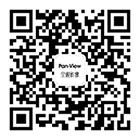
 豫公网安备 41019602002106号
豫公网安备 41019602002106号